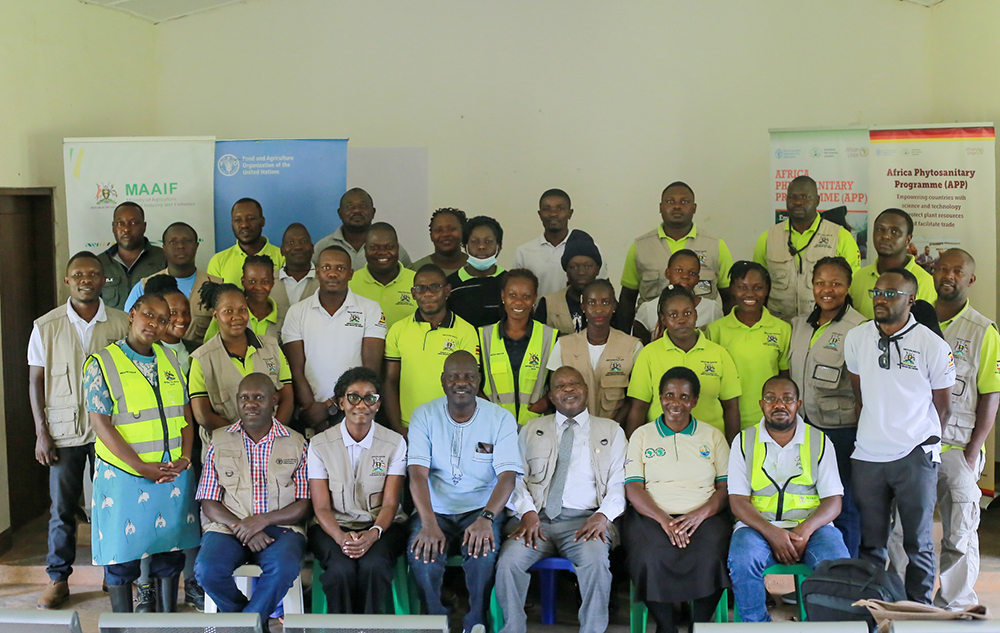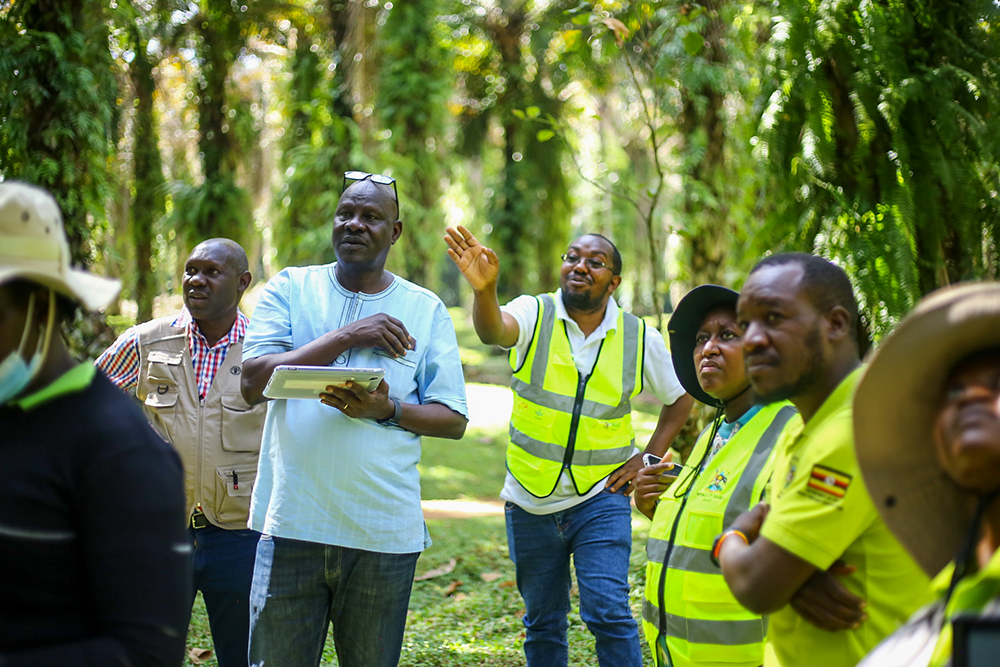Uganda’s agriculture inspectors get digital tools to monitor deadly oil palm pest
Joab Tugume, a senior agriculture inspector in the Ministry of Agriculture, Animal Industry and Fisheries, explained that the focus is on the red palm weevil, which attacks oil palm trees. He noted that oil palm is Uganda’s leading industrial crop.
Explaining the importance of the training, Tugume said that there has been a challenge in disseminating timely information about pests and diseases.
The Government, through the Ministry of Agriculture, Animal Industry and Fisheries, has embarked on training agricultural inspectors on the use of digital tools to detect emerging pests and diseases.
For this particular training, the focus is on the red palm weevil, one of the pests on Uganda’s priority list that is being closely monitored.
Joab Tugume, a senior agriculture inspector in the Ministry of Agriculture, Animal Industry and Fisheries, explained that the focus is on the red palm weevil, which attacks oil palm trees. He noted that oil palm is Uganda’s leading industrial crop.
While the current focus is on the red palm weevil, other crop pests being monitored and listed for surveillance in Uganda include the tomato nematode, banana bunchy top disease and Xylella in flower farms, among others, Tugume explained.
Commenting on the potato nematode, Tugume said they are monitoring Globodera pallida, a species of nematode that causes major crop losses.
The training, which began on October 6 and concluded on October 11, 2025, was conducted at the National Agricultural Research Laboratories in Kawanda, attracting over 50 agricultural inspectors.
The training, which began on October 6 and concluded on October 11, 2025, was conducted at the National Agricultural Research Laboratories in Kawanda, attracting over 50 agricultural inspectors.
Explaining the importance of the training, Tugume said that there has been a challenge in disseminating timely information about pests and diseases.
“As a country, we have been having a challenge of managing pest information. And yet pest information is important for market access. Our trading partners require this pest information for us to access the market. That is the number one reason why we need this training,” Tugume said.
He added that when trainers are well equipped with pest information, it enhances timely reporting and response as soon as a pest is detected in an area, helping to prevent further spread.
“It is cheaper to manage pests before they spread. This programme will help us, especially in the National Plant Protection Organisation field, to have our pest information in one place because now we are learning how to use these digital tools,” he said.
At the same event, Arop Deng, a consultant for the African Phytosanitary Programme (AAP) at the IPPC Secretariat in Rome, explained that the training is part of the AAP initiative launched by the International Plant Protection Convention to help African countries protect their agricultural produce from various pests and diseases, thereby enhancing access to export markets.

Joab Tugume, a senior agriculture inspector in the Ministry of Agriculture, Animal Industry and Fisheries, explained that the focus is on the red palm weevil, which attacks oil palm trees. He noted that oil palm is Uganda’s leading industrial crop.
He added that through such training, National Plant Protection Organisations under Ministries of Agriculture or Environment are equipped with skills to detect pests in a timely manner, respond effectively and recover from infestations.
“That means that whatever is being exported outside the country will have a certificate of being free from pests. That increases confidence from importing countries,” Deng said.
Deng further explained that in international trade, produce can be returned to the exporting country if it is found not to be pest-free.
“Through this programme, inspectors will be assisted to identify the pests and be able to make a decision that increases confidence of the importing countries because the data will be online and they can see it using the digital tools and the science that was provided by the IPPC through this programme,” he explained further.
He added that the programme includes a training package that equips technocrats with advanced scientific knowledge on survey protocols, as well as digital tools such as tablets with GIS systems where data on priority pests is stored.
“With these tools, you can collect data today, and this data can be online and can help a decision maker on what to do in terms of market access, talking to partners, talking to the growers, talking to the exporters, talking to the importers, among others,” he added.